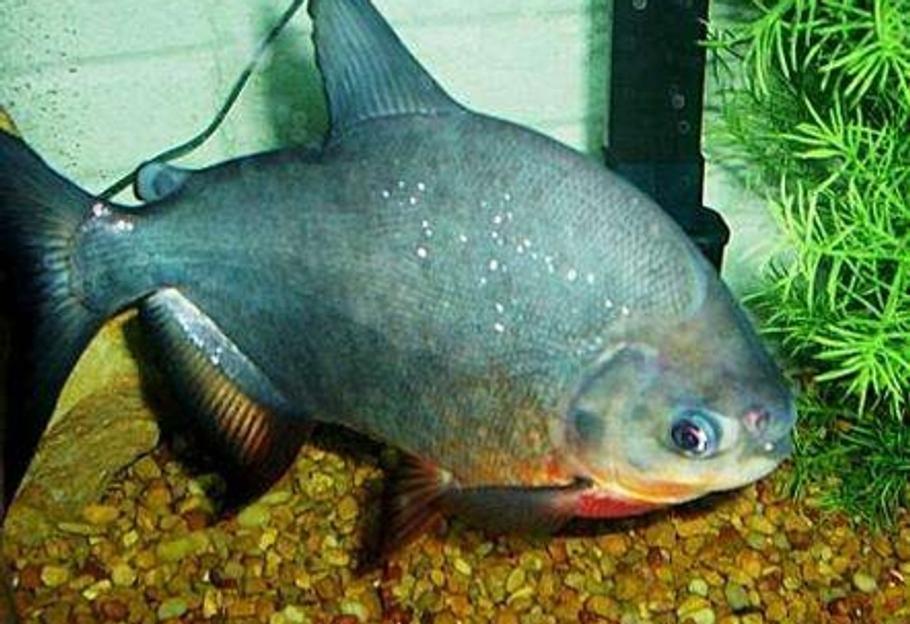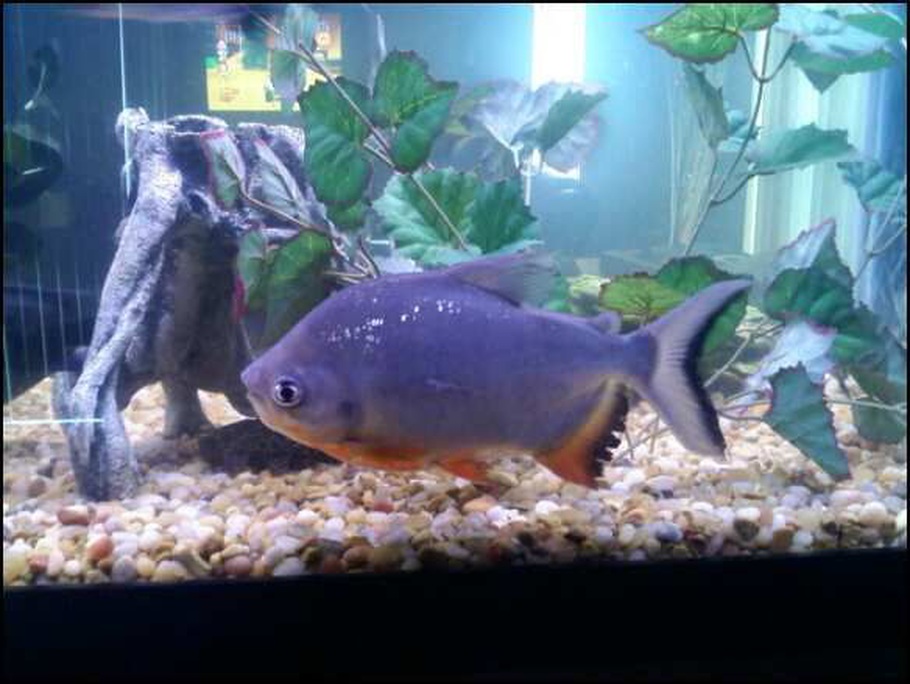CULTIVATING A TANK FOR RED BELLIED PACUS

Updated
The red bellied pacu is a unique and beautiful aquarium fish. If you hope to add these fish to your tank, take the time to learn how to properly care for them.
The red bellied pacu is closely related to the red bellied piranha, but they do not share the piranha's carnivorous appetite. These fish are incredibly beautiful and they display some unique behaviors which makes them an interesting addition to the home aquarium. Before you decide to add one of these fish to your aquarium, read up on the required aquarium maintenance for red bellied pacu, to be sure you are prepared. The red bellied pacu can be a great addition to the freshwater aquarium provided there is enough space.
About the Red Bellied Pacu
These fish look very similar to the much-feared piranha, to which they are closely related, but red bellied pacus are vegetarians. These fish are found in the lakes and rivers of South America where they are very popular as a source of food. Because the red bellied pacu can grow up to 30 inches in the wild, it makes for a very hearty meal. Because these fish were so widely hunted, however, it became necessary for the Brazilian government to create a breeding program to prevent the overfishing of this species.

The red bellied pacu has a laterally compressed body with square, straight teeth and a slight under-bite. This fish is named for the red color of its belly but the rest of its body is silver in color. These fish belong to the characin (tetra) family in the order Characiformes – they are closely related to piranhas and silver dollar fish. In captivity pacus do not often grow to 30 inches, but they can still get quite large - it is not unreasonable to expect a red bellied pacu to grow to 12 inches or more in length.
Whereas their relative the piranha has been known to voraciously consume meat, the red bellied pacu can quickly consume a large amount of plant matter such as lettuce, broccoli, and live plants in the aquarium. These fish make excellent pets, particularly for the experienced aquarium hobbyist, but unfortunately many hobbyists make the mistake of purchasing these fish while they are small, not realizing that they may grow to 12 inches in length.
Aquarium Maintenance for Red Bellied Pacu
Due to their potential size, red bellied pacus have very specific requirements when it comes to setting up a tank. It is not recommended that you keep a pacu in a tank smaller than 50 gallons because, though juveniles of the species may be small, these fish can grow quickly if cared for properly. The optimum tank size for an adult red bellied pacu is 200 gallons, though an indoor or outdoor (if the climate is warm enough) pond is preferable, especially if you plan to keep multiple fish. The tank in which red bellied pacus are kept needs to be adequately filtered and the temperature should be maintained between 78 and 82 degrees Fahrenheit.
Because red bellied pacus are inclined to eat live plants, decorate your tank with artificial plants and large pieces of bogwood. These kinds of decorations will also help to enhance the appearance of your tank, making it appear more natural. Natural decorations can help to create an environment similar to the natural habitat of your red bellied pacus and will also give the pacus places in which to hide. Red bellied pacus have a tendency to become timid in the home aquarium if they are not given adequate hiding places so using pieces of driftwood in the tank is very important.
Feeding Red Bellied Pacus
As you have already learned, red bellied pacus are not carnivores like their relatives the piranha – in fact, red bellied pacus are the opposite, herbivores. Although this species is herbivorous, it can also be an opportunistic feeder – this means that it will eat mostly plant foods but it may eat small fish and insects if they are available. To keep your red bellied pacu healthy in captivity you need to feed it a varied diet of herbivore pellets or floating sticks as well as plenty of fruits and fresh vegetables.

The vegetables that red bellied pacus ae most likely to eat include spinach, lettuce, peas, zucchini, cabbage, and carrots. These fish will also eat various fruits like apples, bananas, grapes, and peaches. Although the red bellied pacu is largely herbivorous, you should not keep this species with any other fish small enough to be regarded as prey. Your pacu might not eat the fish, but it is a possibility. You should also keep in mind that these fish can splash a lot when feeding from the surface, so make sure your tank has a tight-fitting lid. Another tip to keep in mind is that you shouldn’t feed your pacus by hand – use a feeding stick to place food in the water to avoid having your fingers bitten by mistake.
Additional Information
Red bellied pacus are not aggressive fish and, though they prefer to be kept with others of their own species, they can be kept with other fish. Other large, friendly species like datnoids, oscars, and arowana make suitable tank mates for the red bellied pacu. In some cases, red bellied pacus may squabble with others of their own species so it is important to keep these fish in a tank large enough to prevent overcrowding and stress. It is also important that you do not keep these fish in a tank with small species because the pacus are likely to outgrow the smaller fish very quickly.
Like oscars, some pacus have been known to respond to their owners and to recognize feeding times. These characteristics, along with their friendly nature, make the red bellied pacu a great addition to the freshwater aquarium. Because these fish can become quite large, however, it is important for the aquarium enthusiast to research aquarium maintenance for red bellied pacu before purchasing one of these fish. It is also important to remember that, though pacus are not carnivorous, they still have very powerful jaws so you need to exercise extreme caution around these fish.
If you are looking for a unique and interesting fish to keep in your home aquarium, the red bellied pacu is certainly one to consider. Not only are these fish attractive and unique in appearance, but they can also be responsive to their owners. The most important thing to keep in mind when considering these fish is that they require very large tanks as well as high-quality filtration and oxygenated tank water. If you are able to provide for the needs of these beautiful fishes, they can be a joy to keep in the home aquarium.
comments powered by Disqus






































































































































